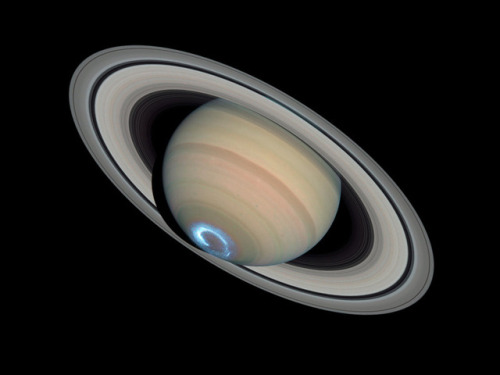The Extent Of Humanitys Mark On Our Universe

The extent of humanitys mark on our Universe
js
More Posts from Saients and Others






https://www.nasa.gov/exploration/systems/sls/major-review-completed-for-new-sls-exploration-upper-stage
SLS’s Exploration Upper Stage completes its Preliminary Design Review

Cristobalite, Hematite
SiO2, Fe2O3
Locality:
Caspar quarry, Bellerberg volcano, Ettringen, Mayen, Eifel, Rhineland-Palatinate, Germany
An interesting homoepitactic intergrowth from brown and black hematite
Photo: Michael Förch
Cristobalite is a silica polymorph that is thermodynamically stable only at temperatures above 1470°C, up to the melting point at 1705°C, at atmospheric pressures. It commonly metastably persists or even forms at much lower temperatures in silica-rich volcanic and sedimentary environments. It can form crystals in cavities, probably vapour-deposited, or spherulites in obsidian or other silicic volcanics.
Hematite is rather variable in its appearance - it can be in reddish brown, ocherous masses, dark silvery-grey scaled masses, silvery-grey to black crystals, and dark-grey masses, to name a few. What they all have in common is a rust-red streak.
Hues in a Crater Slope
by NASA’s Marshall Space Flight Center Impact craters expose the subsurface materials on the steep slopes of Mars. However, these slopes often experience rockfalls and debris avalanches that keep the surface clean of dust, revealing a variety of hues, like in this enhanced-color image from NASA’s Mars Reconnaissance Orbiter, representing different rock types. The bright reddish material at the top of the crater rim is from a coating of the Martian dust. The long streamers of material are from downslope movements. Also revealed in this slope are a variety of bedrock textures, with a mix of layered and jumbled deposits. This sample is typical of the Martian highlands, with lava flows and water-lain materials depositing layers, then broken up and jumbled by many impact events. This image was acquired by the High Resolution Imaging Science Experiment (HiRISE) camera on Feb. 28, 2011 at 15:24 local Mars time. It is a stereo pair with image ESP_021454_1550. The University of Arizona, Tucson, operates HiRISE, which was built by Ball Aerospace & Technologies Corp., Boulder, Colo. NASA’s Jet Propulsion Laboratory, a division of Caltech in Pasadena, California, manages the Mars Reconnaissance Orbiter Project for NASA’s Science Mission Directorate, Washington. Image Credit: NASA/JPL/University of Arizona Caption: Alfred McEwen NASA Media Usage Guidelines
some of my favourite absolutely SICK facts about the trappist-1 exoplanets: - theyre all very close to one another and to their star, so the length of a year on them varies from 1 to 20 DAYS - since they’re so close, the star appears a lot bigger than our sun from earth, and from one planet you could easily see the rest, some would even appear bigger than the moon from earth. you could literally see the surface of another planet with the naked eye!!! - they’re probably tidally locked to their star like our moon is locked to earth, meaning only one side of a planet ever faces the star, and on the other side it’s always night. the sun never sets or rises on any of the planets - the star is red, so the sunlight is red/orange, meaning if, for example, plants were to grow there, they could be black and that’s just what we know now, imagine how much cool stuff we have yet to discover about the trappist-1 system
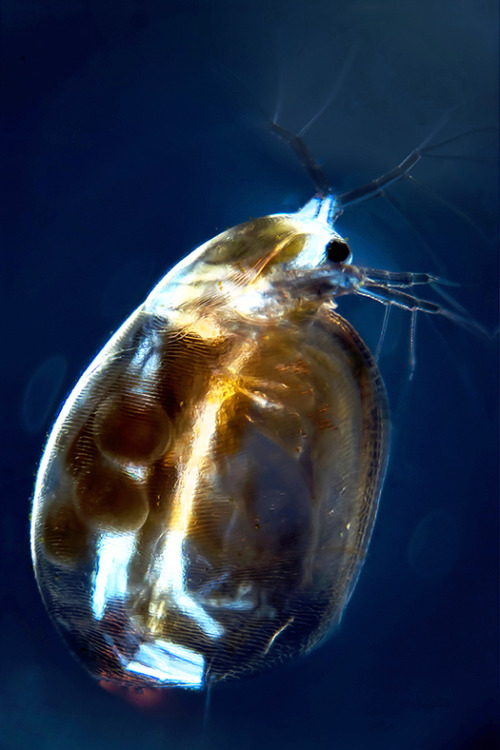
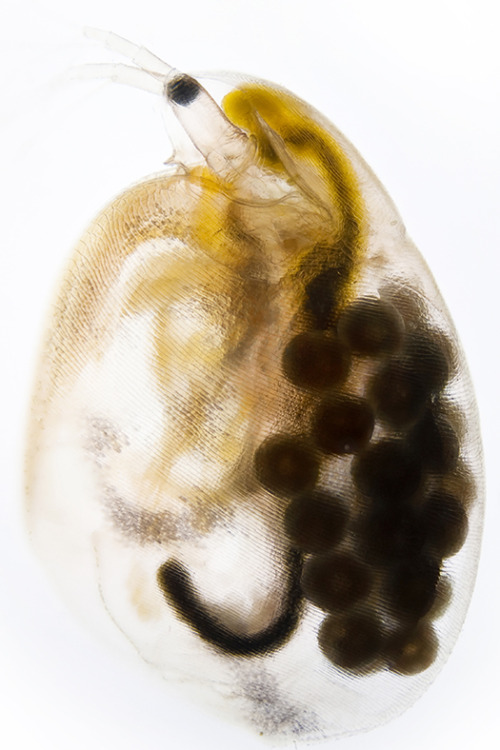
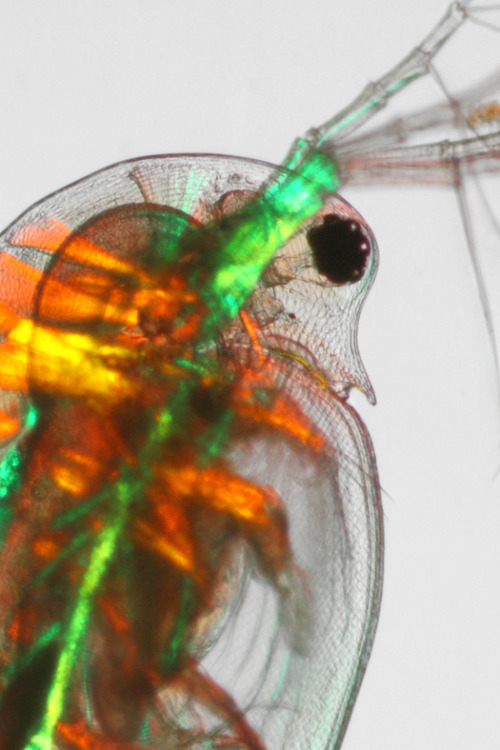
A salty situation.
Zooplankton may be the smallest species in the freshwater food chain, but they play a big role in preserving our lakes, streams and wetlands. That’s one of the reasons why IBM joined forces with the Rensselaer Polytechnic Institute and The FUND for Lake George to create the Jefferson Project at Lake George to understand and protect freshwater ecosystems. Recently they studied the effects road salt has on a species of zooplankton. Road salt usage has increased 50-fold since 1940, and bodies of freshwater are increasing in salinity because of it. Using IBM technology, the researchers monitored zooplankton in varying levels of salinity and found that the organisms were capable of evolving a higher tolerance to the salt. This is good news for the ecosystem since the loss of plankton could have cascading effects throughout the food chain. See, small can be mighty too.
Explore the study’s results →
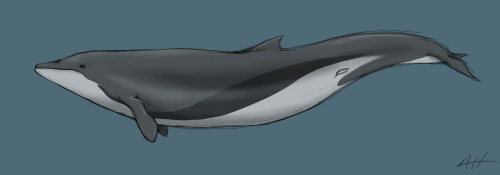
As a paleo-artist, one of my biggest pet peeves are prehistoric whales reconstructed not as whales but as sinewy, snarling, shrink-wrapped marine reptiles. It’s just not a plausible reconstruction, even if it’s highly speculative, and it paints an incorrect image in the public eye. Granted, this is a struggle I’ve exlpored in all forms of paleo-art and reconstructive illustration. But the whales have really been getting to me recently.
Here are some recontructions of Basilosaurus, if you don’t know what I mean (one by Karen Carr, the other by an artist I could not determine):


These snakey, reptilious reconstructions may stem from the fact that Basilosaurus, one of the first early cetaceans to be found, was believed to be a reptile when first discovered (hence the name). Maybe we simply haven’t fully shaken that mindset.
But still! Even the damn Smithsonian, which has such a wonderful collection of ancient cetaceans, is at fault in this:

Don’t even get me started on their recently-closed dinosaur hall. Thank the lord they’re finally renovating that dated piece of crap.
I have struggled to find a way to reconstruct these animals so that they are just a little bit more believeable. Up top I’ve done a really really quick sketch of Dorudon. I tried to not only make its body more streamlined and whale-like (because Dorudon has a lovely, almost but not quite modern-looking skeleton), but I also tried to give it markings similar to what we find on modern cetaceans for camouflage. Because hey, who’s to say they didn’t have ‘em? I tried to make them familiar but not directly copied from any modern species.
Aaaaand end rant.

1) Does not hurt rhinos
2) Discolours ivory (BRIGHT PINK) thus reducing saleability
3) Can be detected by airport scanners, even if ground up, thus increasing the chances you will be caught
4) Causes nausea, vomiting, and diarrhea if ingested by humans, thus driving away your customer base
Win. Win. Win. Win.
-
 meditationrelaxationmusic reblogged this · 4 years ago
meditationrelaxationmusic reblogged this · 4 years ago -
 tigerpaws5 liked this · 5 years ago
tigerpaws5 liked this · 5 years ago -
 petie-wabbit liked this · 6 years ago
petie-wabbit liked this · 6 years ago -
 durden44 reblogged this · 6 years ago
durden44 reblogged this · 6 years ago -
 idesdav liked this · 6 years ago
idesdav liked this · 6 years ago -
 feyariel liked this · 6 years ago
feyariel liked this · 6 years ago -
 ignorance-is-fish reblogged this · 6 years ago
ignorance-is-fish reblogged this · 6 years ago -
 iindigoboii liked this · 6 years ago
iindigoboii liked this · 6 years ago -
 delphicvoiceaddragh liked this · 6 years ago
delphicvoiceaddragh liked this · 6 years ago -
 michael-rocket liked this · 6 years ago
michael-rocket liked this · 6 years ago -
 sharkspaceengine liked this · 6 years ago
sharkspaceengine liked this · 6 years ago -
 thatsnotyourpurse liked this · 6 years ago
thatsnotyourpurse liked this · 6 years ago -
 jedisixoftwelve liked this · 6 years ago
jedisixoftwelve liked this · 6 years ago -
 bonsai-357 liked this · 6 years ago
bonsai-357 liked this · 6 years ago -
 the-dank-knight-returns liked this · 6 years ago
the-dank-knight-returns liked this · 6 years ago -
 prv-d-maliline reblogged this · 7 years ago
prv-d-maliline reblogged this · 7 years ago -
 spacediscoverer liked this · 7 years ago
spacediscoverer liked this · 7 years ago -
 theheckler4562-blog liked this · 8 years ago
theheckler4562-blog liked this · 8 years ago -
 antimena-pie reblogged this · 8 years ago
antimena-pie reblogged this · 8 years ago -
 honestybluue reblogged this · 8 years ago
honestybluue reblogged this · 8 years ago -
 astroheaux liked this · 8 years ago
astroheaux liked this · 8 years ago -
 literally-in-space reblogged this · 8 years ago
literally-in-space reblogged this · 8 years ago -
 footothefloor liked this · 8 years ago
footothefloor liked this · 8 years ago -
 pyrrhamood liked this · 8 years ago
pyrrhamood liked this · 8 years ago -
 m00nbloom reblogged this · 8 years ago
m00nbloom reblogged this · 8 years ago -
 reads2live reblogged this · 8 years ago
reads2live reblogged this · 8 years ago -
 bbreathee-mee liked this · 8 years ago
bbreathee-mee liked this · 8 years ago -
 malosunca-blog reblogged this · 8 years ago
malosunca-blog reblogged this · 8 years ago -
 superliz6 reblogged this · 8 years ago
superliz6 reblogged this · 8 years ago -
 superliz6 liked this · 8 years ago
superliz6 liked this · 8 years ago -
 ambassador-sol liked this · 8 years ago
ambassador-sol liked this · 8 years ago -
 singofsolace reblogged this · 8 years ago
singofsolace reblogged this · 8 years ago -
 mangoeclair3 reblogged this · 8 years ago
mangoeclair3 reblogged this · 8 years ago -
 chibithedemonic liked this · 8 years ago
chibithedemonic liked this · 8 years ago
Stardate: 2258.42...or, uh, 4... Whatever. Life is weird, at least we've got science.
75 posts
